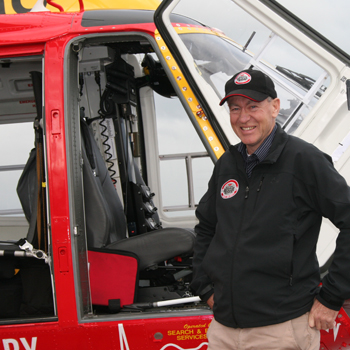Four rescue helicopter landing pads have been built around the Southern Coromandel as part of a multi-agency motorcycle safety project, led by the NZ Transport Agency.
The landing areas have been placed along the Southern Coromandel loop, a 130km state highway route which passes through Kopu, Whangamata, Waihi and Paeroa.
The loop is the site of Safer Rides Southern Coromandel , a New Zealand first pilot project aimed at reducing the number and severity of motorcycle crashes on that stretch of highway.
The Transport Agency’s Principal Safety Engineer, Michelle Te Wharau, says the helicopter landing pads give emergency service crews greater access to the area, which means injured riders or others requiring medical assistance will get treatment as quickly as possible.
“The rugged terrain and scenic beauty of the Southern Coromandel make it an irresistible touring route for motorcyclists who really enjoy putting their skills to the test,” she said.
“Unfortunately, crash data shows that over the past five years (2009-2013) motorcyclists were involved in 42% of the fatal and serious crashes along this stretch of highway, yet they make up only two per cent of the road users.”
The Transport Agency worked closely with the Westpac Rescue Helicopter Trust to scope suitable sites which are now formed and clearly marked with a large yellow ‘’H’’.
The Waikato Westpac Rescue Helicopter chief pilot, Grant Bremner, and Dave Walley, from the Auckland based Westpac Rescue Helicopter are delighted by the move by the Transport Agency, saying the landing pads will enable their crews to get to those in need faster.
“The landing pads will allow medical staff to get to injured people in the critical first hour, which significantly increases their chances of survival,” Mr Bremner said.
All emergency services such as Search and Rescue, the NZ Fire Service and Civil Defence will also be able to use the landing pads.
Mrs Te Wharau said the landing pads are among a series of safety improvements being trialled along the route under the Safer Rides project.
The project is part of the Safer Journeys strategy; the driving force behind the Government’s push to create a transport system that is increasingly free of deaths and serious injuries.
“Along with upgraded signage for curves and wider edge-lines, we have sealed a number of entrances along the route to reduce the amount of gravel and other debris on the road,” she says.
“We are trialling different road markings to help guide riders around corners, have resealed or treated the road surface to create a more consistent ride and added guard rails in some areas with a steep drop-off.
“We have also replaced many large concrete drainage pipes with smaller flat and dome shaped covers, which are more forgiving in the event of a crash.”
Riders will also notice a series of billboards with tips for ways to cope with the challenges of riding the route.
“Although the new helicopter landing pads are great, hopefully with all the safety improvements and messaging we have made along the route we will have less motorcyclists needing to use them” says Mrs Te Wharau.
The NZ Transport Agency is working in partnership on the Safer Rides project with the Motorcycle Safety Advisory Council, ACC, Thames-Coromandel and Hauraki District Councils, Waikato Regional Council, NZ Police as well as motorcycling user groups.
Successful initiatives from the project will inform other motorcycle safety projects in New Zealand.

Waikato Westpac Rescue Helicopter chief pilot, Grant Bremner
A map showing the landing pads are available here(external link).
For more information on the project and to view an interactive map showing the changes, visit www.nzta.govt.nz/safer-rides-sc(external link)
About Safer Journeys
The Safer Journeys strategy is the driving force behind the Government’s push to create a transport system that is increasingly free of deaths and serious injuries.
To achieve this, the strategy takes a ‘safe system’ approach, looking across the entire road system to improve safety by creating safer roads and roadsides, safer speeds, safer vehicles and safer road use.
The safe system approach also recognises that people make mistakes and are vulnerable in a crash, and aims to reduce the price paid for a mistake so crashes don't result in death or serious injuries.
For more information on the Safer Journeys strategy and the Safe System approach, see www.saferjourneys.govt.nz(external link)
For more information please contact:
Natalie Dixon
Waikato / Bay of Plenty Media Manager
T: 07 928 7908
M: 021 928 413
E: natalie.dixon@nzta.govt.nz